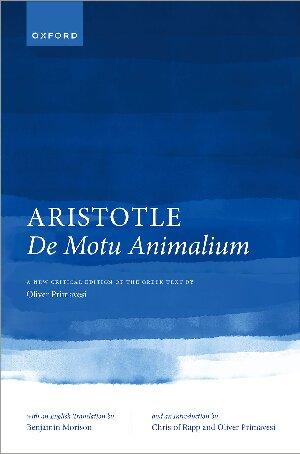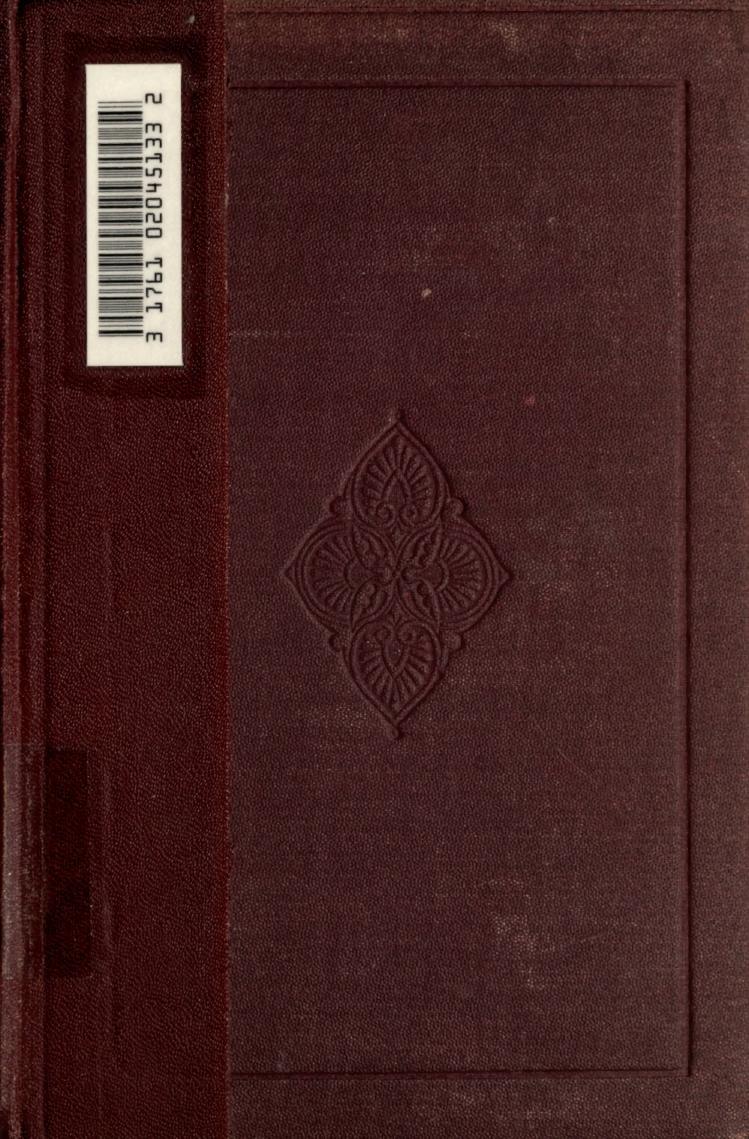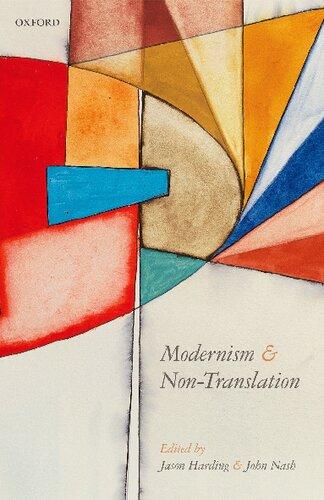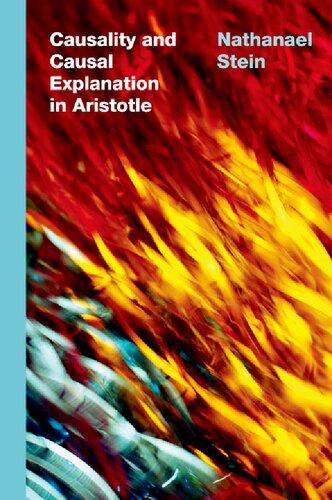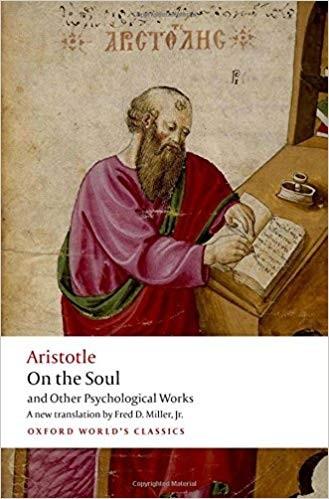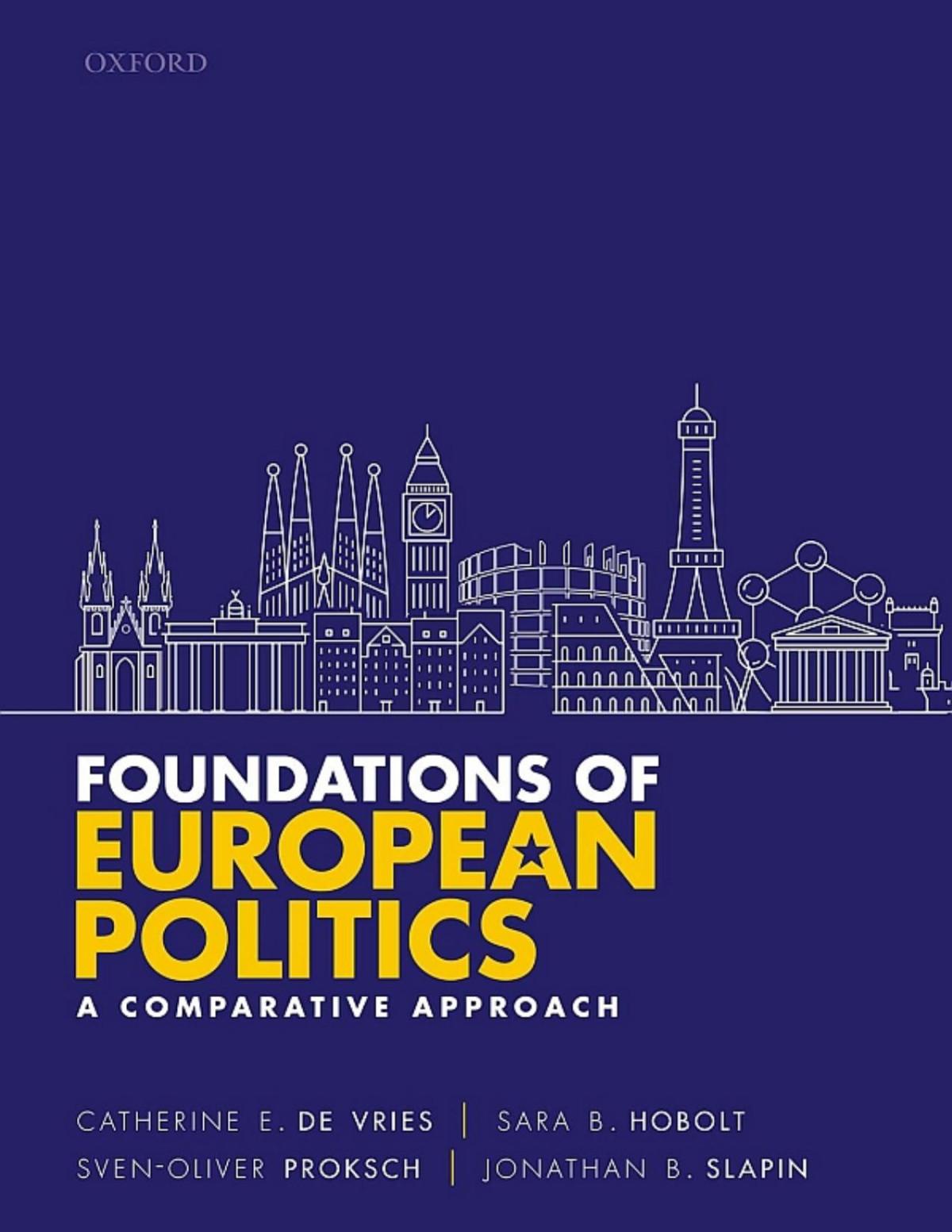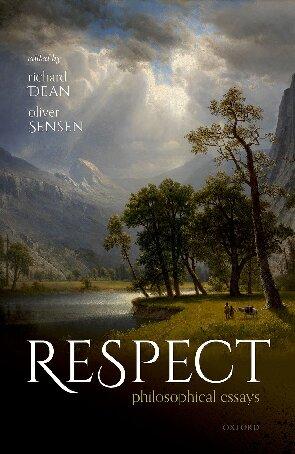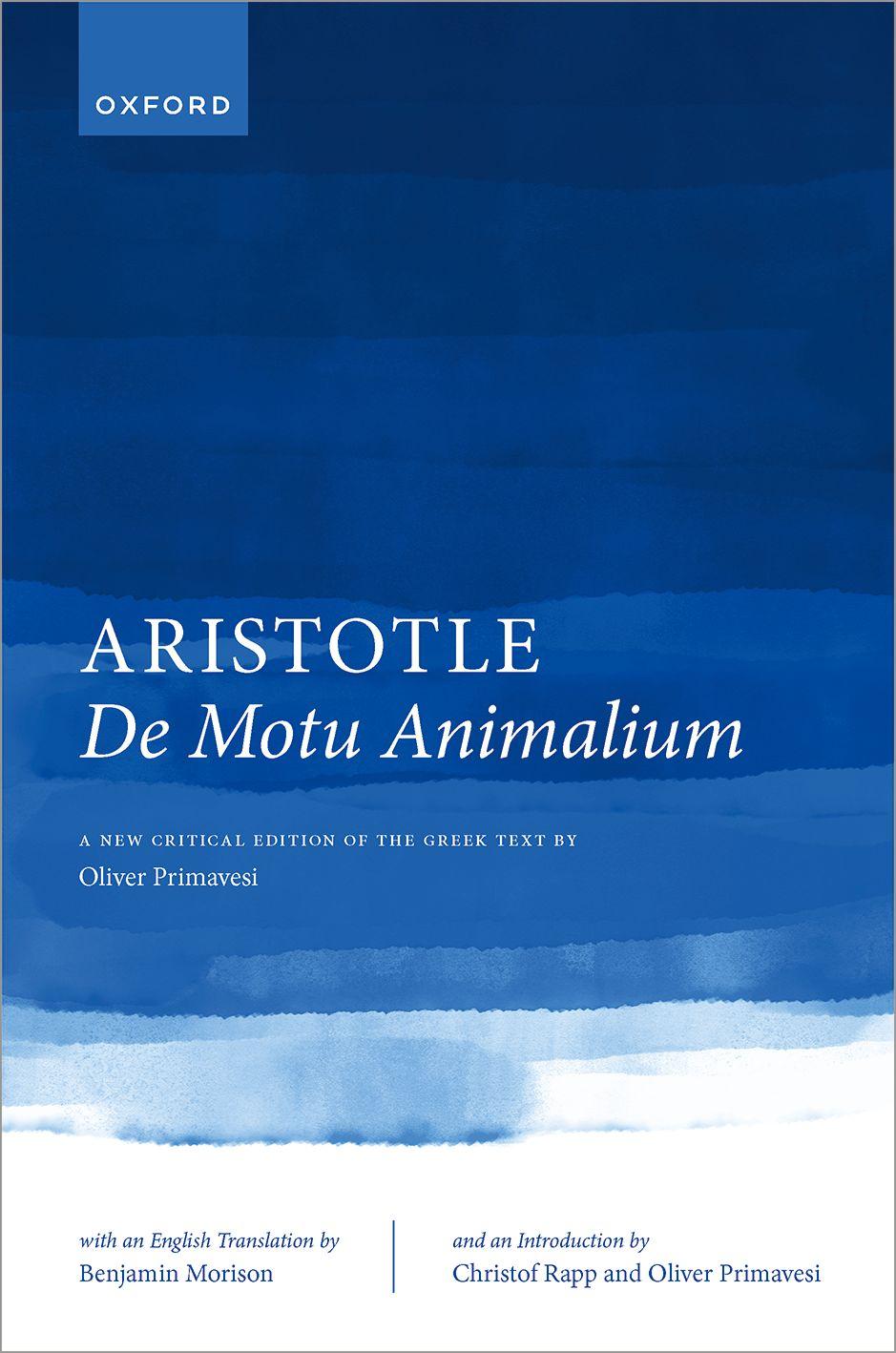The Argument of De Motu Animalium
Christof Rapp
1. Aristotle’s De Motu Animalium: Its Topic and Purpose
The treatise that has come down to us under the title De Motu Animalium (MA) holds a peculiar place within the Aristotelian oeuvre. 1 It treats the phenomenon of animal self-motion—that animals, both human and non-human, are capable of moving themselves. Although animals do so in several different ways—e.g. by walking, flying, swimming, crawling, creeping, and hopping—there is a common cause of this movement that MA means to uncover.2 This general topic seems to align the treatise with the common project of Aristotle’s zoological writings. And, indeed, there is substantial common ground between MA and the zoological treatise De Incessu Animalium (usually translated as ‘On the Progression of Animals’) as well as those chapters of De Partibus Animalium that inquire into the extremities and all other motion-enabling parts of animals. At the same time, it is remarkable that the argument of MA dwells for almost two chapters on the movement of the universe as a whole. In a similar vein, the treatise includes references to the unmoved mover, to the eternal movement of celestial bodies, and to ‘first philosophy’. In general, there is a tendency
1 I would like to thank Andreas Anagnostopoulos, David Charles, Klaus Corcilius, James G. Lennox, and Christopher Shields for written comments on earlier versions of this text.
2 At the beginning of the treatise, at 698a4, Aristotle announces that he will speak ‘about the common cause (περὶ
)’ of all kinds of movements; in the treatise’s closing lines, at 704b2, he concludes that he has now dealt with the causes ‘regarding motion in general (
)’.
throughout the treatise to show that the principles that are invoked to explain the movement of sublunary animals instantiate, or at least align with, certain more comprehensive kinetic principles.
This remarkably synoptic perspective notwithstanding, MA also carries out a very precise task that connects it with Aristotle’s psychological and/or psychophysical writings, namely De Anima on the one hand and the short treatises contained in the collection Parva Naturalia on the other: from MA 6 onwards the overarching project of identifying the common cause of all animal motion is recast as the more specific question of how it is that the soul moves an animal’s body. That the soul is partly constituted by the capacity to originate locomotion is the central thesis of De Anima III 9–11. At the end of De Anima III 10, after having assessed the role of thinking and desiring in initiating locomotion, Aristotle points out that ‘the instrument by which desire initiates motion is already something bodily’ and that it is necessary to examine it among the functions common to body and soul (433b19–21). Considering things that are ‘common to body and soul’ is a characterization that Aristotle also applies to the project carried out in the Parva Naturalia: in De Sensu 1 (436a6–9), he mentions as examples of such common functions ‘sense-perception, memory, spirit, appetite, and desire in general’—though none of the treatises of the Parva Naturalia has ‘spirit, appetite, and desire in general (θυμὸς καὶ
ὄρεξις)’ as its topic,3 whereas MA has a lot to say about desiring and its somaticphysiological side. Moreover, chapter 10 of MA concludes the meticulously developed account of how the soul moves the body by saying that ‘it has now been stated by which moved part the soul imparts movement’ (703a28–9). Since this refers to the moved bodily part by which the soul imparts movement, the formulation suggests itself as answering to the announcement made at the end of De Anima III 10. Such a correspondence would render essential parts of MA a psycho-physical or psychosomatic project designed to explore the bodily instruments and preconditions for the soul’s initiation of movement.4
It is obvious, then, that the project of MA is connected with many different aspects of Aristotle’s philosophical and scientific thought. These connections are reflected in numerous allusions and cross-references5 to other Aristotelian works. Though dedicated to a relatively precise and well-defined question, the treatise MA thus stands out by its tendency to treat the explanation of animal
3 As Jaeger 1913a, 39, observed, the project of MA, consisting in the search for a common cause of animal motion, is similar to the project of the Parva Naturalia also in that the latter treatises treat phenomena like sleeping, waking, breathing as common, and not as peculiar to different species. On the relation of the MA to the Parva Naturalia, see now Rashed 2004, 191–202.
4 For a full discussion of questions of this kind, see Laks 2020.
5 Düring 1966, 296, nn. 37 and 38, offers a collection of such cross-references and formulations reminiscent of the wording in other Aristotelian works.
motion almost as the missing link between different strands of Aristotelian philosophy and by shedding light on a variety of exegetically controversial and philosophically challenging issues.
Martha C. Nussbaum’s book on De Motu Animalium—first submitted as a PhD thesis in 1975, then published in the first edition in 1978 and in a second revised edition in 1985—is the first full modern commentary on the MA and, thus, became a landmark publication. Although some of Nussbaum’s specific claims were received with reluctance by the scholarly community, and although some of her discussions seem to be recognizably influenced by philosophical tendencies of these years, her book as a whole managed to establish an agenda of philosophical issues that continue to be discussed in connection with this treatise down to the present day. Since the publication of Nussbaum’s book a German (Kollesch 1985) and a French (Morel 2013) commentary of Aristotle’s MA have been released; also, an English translation of Michael of Ephesus’ Greek commentary on De Motu Animalium has been published (Preus 1981). A collection of ten essays on the MA has been edited by Marwan Rashed and André Laks (Laks/Rashed 2004). Apart from commentaries and collections, several monographs have been dedicated to the MA as a whole, most notably Labarrière 2004, Morel 2007, and Corcilius 2008a. Other studies such as Lorenz 2006 have focused in part on the thematically related chapters III 9–11 of De Anima. 6
2. The Structure of De Motu Animalium
The treatise is structured, at the macro level, by two different—though related— guiding questions. The first of them is given at the beginning of chapter 1. What needs investigation, Aristotle says, is the ‘common cause’7 of animal motion (698a4) pertaining to all particular types of movement. Apparently, this formulation is meant to demarcate the project of MA from the related but distinct project of De Incessu Animalium, which focuses more on the different types of animal motion and the different anatomies of the various genera of animals. The next five chapters deal with certain preconditions of animal selfmotion, but they also dwell on the question of whether the same conditions hold for other cases of movement—in particular, that of the universe as a whole. Hence, the second guiding question, formulated at the beginning of chapter 6,
6 Cf. also the recent commentaries on De Anima, Polansky 2007 and Shields 2016, as well as Johansen 2012.
7 I stick to this established rendering, although I agree, of course, that Aristotle aims at a ‘common explanation’ of animal motion; cf. Nussbaum 1983, n. 2.
marks the transition to a more focused discussion of animal motion; strictly speaking, there are two such questions: ‘it remains to consider how the soul moves the body and what the principle/origin of animal motion is’ (700b9–11). The first question is straightforward and seems to take up an issue that has been prepared for by De Anima III 9–11; for saying that the soul imparts movement by desiring (in combination with perceiving, phantasia, or thinking), leaves open the question of how the psychic capacity to desire can actually make the animal’s limbs move and set the entire animal into motion. The second question refers to a principle of animal motion, and is thus reminiscent of the initially formulated quest for the ‘common cause’ of animal motion. We can expect, then, that any full account of such a common cause will mention the soul or particular capacities of the soul, but will also identify certain bodily instruments through which movement is imparted to the locomotion-enabling parts of an animal’s body. Since the sought-after cause is a common one, the somatic or physiological explanation must also be one that abstracts from the anatomic peculiarities of different genera of animals.
Two main parts of the treatise? The first part of the treatise thus spans chapters 1 to 5, the second part chapters 6 to 10 (or 11—depending on whether one sees the last chapter as an appendix or as more intimately connected with the main argument of chapters 6 to 10).8 In principle one could say, then, that the first part deals with certain conditions of movement in general, while the second part focuses on animal motion more specifically. This seems to be right, but it is not the entire story, for chapters 1–2 are already dedicated to animal motion in particular and chapter 6 follows the first part of the treatise in comparing animal motion to cosmic or celestial movement. Nevertheless, it seems convenient to subdivide the treatise into these two main parts.9
The entire first part of the treatise is held together by a quite general claim stated early in the first chapter (698a7–10), that what moves itself by itself—a self-mover—is the origin or principle (arche ) of the movement of other things, while the principle of its own movement, i.e. the principle of the movement of self-movers, is unmoved (akineton). This claim is not meant to be peculiar to animal motion; on the contrary, it is stressed that the claim is imported from another context related to the discussion of eternal motion. The transition to the discussion of animals is made by the announcement that one must apply this general claim to particular cases and the particular case to be discussed above all is animal motion.
The case of animal motion. This latter announcement is substantiated in the rest of chapter 1 and in chapter 2, first by showing that there must be something
8 Morel 2020 argues that chapter 11 is an important part of the overall project.
9 On some implications of this subdivision of the treatise, see section 3 (iii), below.
within the animal that is at rest (MA 1, from 698a14), then again by showing that there must be something unmoved external to the animal, by pressing against which the animal moves (MA 2). In other words, the general akinetonrequirement stated at the outset applies to the locomotion of animals in at least two different ways, first in that they need an internal resting point and second in that they need an external resting point or platform that offers resistance (for otherwise they would have the same experience as people trying to walk on sand that always gives way). The internal resting point gets immediately correlated with joints, for when the animal bends or straightens its limbs one point within the joint moves, while another point must remain at rest (the joint or a point within the joint is, as Aristotle says, sometimes potentially one, while actually two, and sometimes actually one, while potentially two); joints are thus origins of movement, especially the unmoved region or point within them. As for the external resting point, MA 2 shows that this unmoved thing must, as a whole, be different from, and thus no part of, the moving thing as a whole.10
The akineton-requirement and the motion of the whole. When introducing the external resting point at the beginning of MA 2, Aristotle notes that it is worthwhile to pause for more general reflection at this juncture, since this idea makes the present study relevant not only to animal motion, but also to the motion of the universe (698b9–12). And, indeed, chapter 3 and the first part of chapter 4 consider aporiai, difficulties,11 deriving from the attempt to apply the akinetonrequirement, as it was specified for animals, to the movement of the universe as a whole: is there something unmoved that bears the same relation to the whole of nature that the surface of the earth bears to self-moving terrestrial animals? Would that mean that there is something unmoved which is neither in nor of the universe? If the mover of the universe is itself moved it must at least touch and lean on something that is unmoved and must not be a part of the universe. Or is the mover of the universe itself unmoved? The two poles of the universe, which some might suggest, cannot do this job of the mover. Nor could the mythical Atlas, who is said to twirl the heavens around the poles while keeping his feet on the earth. Moreover, all models that introduce an interior mover, like Atlas, that makes use of the earth’s state of rest, would face the problem of excessive powers; for if the mover exerts disproportionate power on the earth, the earth could be moved from its central position. Scenarios like this, if they are possible, threaten to make the universe destructible. For Aristotle, however, the MA is not the right place to fully resolve this sort of difficulty.12 Nor is it
10 Cf. Coope 2020, sections 2–3.
11 There are above all two such difficulties that are flagged as aporiai: 3, 699a12–b11 and 4, 699b12–31; cf. Coope 2020 and Morison 2020.
12 Or so he says a few lines later in MA 4, 700a20–1: ‘But whether there is something higher and a first mover is unclear, and such a principle is a topic for another discussion.’
clear and uncontroversial how the digression on the movement of the whole universe is meant to contribute to the overall argument.13 At any rate, the brief passage that rounds off the discussion of the two aporiai14 approvingly quotes Homer saying that Zeus cannot be dragged from heaven to earth however hard one toils. Aristotle interprets these lines as implying that what is absolutely (and by its nature) unmoved could never be moved and that the assumption of such an (entirely unmoved) principle could also avoid the above-mentioned threat of the universe’s destructibility.
The akineton-requirement in its broader context. The rest of chapter 4 and the whole of chapter 5 seem to resume the original agenda and repeat the uncontested result of MA 1 and 2—namely, that in order to move, living beings need both internal and external unmoved points. This result is now embedded into two broader perspectives. First it is asked whether the same requirements also hold for inanimate beings or whether it is enough if they hold for the animate beings, which, as was already stated in MA 1, set inanimate beings in motion. Next the question is raised whether these requirements hold only for locomotion or for all kinds of change and growth. In answer, Aristotle refers the reader to the primacy of locomotion both in the universe and in the generation of individual animals. One can say that by the end of MA 5, the very generally formulated akineton-requirements from the beginning of MA 1 have been in some way probed with regard to several particular cases (as proposed at 698a12–14): with regard to living beings, the universe as a whole, inanimate beings, and several types of movement/change (kinesis).
13 Several commentators are unsatisfied by regarding these difficulties as ‘merely digressing’ from the main topic; thus Nussbaum 1978 tries to integrate them into the ‘interdisciplinary’ project that she diagnosed (see below, section 7), while Coope 2020 and Morison 2020 develop a reading according to which the discussion of these difficulties is meant to show ‘that the analysis of the self-motion of animals he gives in chapters 1 and 2 gave us only an incomplete picture of the immobile causal factors involved in motion’ (Morison 2020, 274). And, indeed, the fact that at the end of MA 4 Aristotle speaks of unmoved principles of motion and not just of unmoved preconditions of motion (like the joint and the external springboard) deserves attention; cf. Coope 2020, 241: ‘Thus, though it is true that the movement of the spheres, like animal self-movement, depends upon the existence of an unmoved external thing, in the case of the spheres this external thing is an unmoved mover, and hence has a role very different from that of the external springboard, the necessary condition for animal self-movement that we learn about in MA 2.’ By the end of MA 4 the insufficiency of physical platforms or springboards has only been shown for the movement of the universe, not for the case of animal motion. One might argue, though, that the new approach in MA 6—which immediately refers to final causes both for cosmic movement and intentional animal motion—was indirectly motivated by the result of the puzzles. Alternatively, or as an addition to the view developed by Coope and Morison, one could stress that it is in response to the cosmic puzzles (see especially MA 4, 699b34 sqq.) that Aristotle for the first time in this treatise alludes to the idea of an unmoved mover that is unmoved by its nature and is not just unmoved as a matter of fact. Essentially the same idea will recur in the discussion of MA 9, where Aristotle assumes that the soul too is a mover of this kind, i.e. a mover that is per se unmoved, as opposed to resting parts of the body, which only happen to be unmoved.
14 MA 4, 699b32–700a6.
Transition to the second part of the treatise. The second main part of the treatise, starting with chapter 6, can thus turn to a different agenda. Since inanimate beings have been dealt with (partly elsewhere, partly by saying that their movement depends on self-movers), and since the discussion of the first mover and the first moved thing (i.e. the first heaven) has been addressed in the context of ‘first philosophy’, it remains to discuss animal self-motion. More specifically, it remains to discuss how the soul moves the body and what the principle/origin of animal motion is. These two questions provide the common thread of the argument until the end of MA 10. Remarkably, the new approach of MA 6 immediately mentions final causes for both cosmic movement and intentional animal motion. The psychic factors of animal motion. The first step towards answering the guiding question of how the soul moves the body seems to make use of ideas like those put forward in De Anima III 9–11.15 Animals move themselves for the sake of an end or goal. If we want to know how they do that and what the moving factors are, we can easily see that they are moved by discursive thought (dianoia), imagination or appearance (phantasia), choice (prohairesis), wish (boulesis), and appetite (epithumia). This extensive list—which might even be extended to include sense-perception and spirit (thumos)16—can quickly be reduced to a short-list of two generic moving factors, namely thought (nous) and desire; for wish, spirit, and appetite are just kinds of desire, while sense-perception and phantasia, just like thought, involve discernment (krinein) and can thus, as Aristotle puts it, hold the same place as thought. Choice, the final candidate on the list, includes elements of both discursive thought and desire. The first mover can therefore be said to be the object of desire (to orekton) and the object of thought (to dianoeton)17—however, not just any object of discursive thought, but only a goal achievable by action. In De Anima III 9–11, after reaching a similar stage in the inquiry, Aristotle discusses which of them—desire or thought—is the decisive mover, while in MA 6 this discussion does not seem to play a role—perhaps because the model of the ‘practical syllogism’ in MA 7 will imply a more differentiated account of how desire and thought (or, in the case of non-human animals, perception and phantasia) must come together in order to initiate motion. Instead, MA 6
15 Cf. the discussion in Corcilius 2020.
16 This list is given in lines 700b17–18; it seems easy to import the two missing candidates, senseperception and spirit, from the following lines 700b20 and b22. It is, however, a different question whether these words should be printed in the text, as in Torraca. In light of the new textual evidence Nussbaum seems to be even more justified in resisting this possibility and sticking to the majority reading (see Nussbaum 1976, 143–4, and Nussbaum 1983, 136, n. 42). This question is also discussed by Corcilius 2020, n. 40.
17 700b23–4. On the eventful history of transmission of these lines, see Part II of this introduction; ‘noeton’ is Primavesi’s emendation for the transmitted ‘dianoeton’.
repeats one other important result from De Anima III 9–11,18 one that concerns the relation between desire (orexis) or the capacity to desire (orektikon) on the one hand, and the desired object (orekton) on the other: while the latter imparts movement without being moved, the former imparts movement (to the animal) by being moved (through the object of desire). The final moved element in this chain, the animal, does not necessarily move anything else.19 We thus get the triplet of unmoved mover—moved mover—moved object that we know from De Anima III 10. That the object of desire is an unmoved mover recalls the first statement of the akineton-requirement in MA 1, according to which the movement of self-movers depends on prior unmoved movers. Aristotle will apparently refer back to this threefold account at the beginning of MA 10, when he mentions ‘the account that states the cause of motion’.20
The practical syllogism and the completion of the psychological explanation. 21 The first part of chapter 7 introduces the famous ‘practical syllogism’ and it does so in more words and with many more details and variants than any other passage in the Aristotelian oeuvre. 22 Remarkably, it is motivated by a quite specific question: given the scenario sketched above—treating objects of thinking and desiring as movers of the animal—how is it that when one thinks (of certain objects) one sometimes acts and sometimes does not act?23 The reconstruction of Aristotle’s argument in this chapter is notoriously controversial; it is, however, safe to say that the model of the practical syllogism serves the purpose of answering this question, in that it distinguishes between several types of ‘premise’ among the psychic antecedents of any action or intentional locomotion and shows that in order to bring about an action (which is said to hold the place of the conclusion) specific pairs of premises are required—most notably, the one saying what is good, the other what is possible, or, as many interpreters assume, the former representing desire, the latter thought or perception. For example, my thinking that every man should walk and, in addition, that I myself am a man, makes me immediately walk. Thinking that one should drink and thinking, in addition, that this is a drink, one immediately drinks. If only one of these premises were given, no action would come about. In addition, the model of the practical syllogism allows Aristotle to explain why in some cases additional
18 Cf. De An. III 10, 433b13–18; for a discussion of this passage and its relation to the MA, see Laks 2020, sections 3–5, and Rapp 2020b.
19 MA 6, 700b35–701a2. 20 MA 10, 703a4–5.
21 The headings of ‘psychological’ and ‘physiological’ are convenient to indicate the difference between passages using psychological vocabulary (e.g. perceiving, thinking, desiring) and those that incorporate bodily changes described in somatic-physiological terms (e.g. heating, cooling, contracting, and expanding). They are not meant, though, to claim that Aristotle provides two different accounts of animal motion, as suggested by Nussbaum 1978 (e.g. 87–8, 188) (and retracted by Nussbaum 1983, 139 sqq.).
22 Cf. Cooper 2020.
23 For an alternative reading of this sentence, see Crubellier 2004, 9–11.
calculation is required, whereas in other cases one acts immediately. At any rate, this discussion, triggered by the question of why it is that agents sometimes act and sometimes do not, yields the more general result that animals have impulses to move and act, when desire for a particular object, deriving from perception, phantasia, or thought, is the last or proximate cause of movement.24
Transition to the physiological side of the sought-after explanation. The second part of chapter 7, starting from 701b1, marks an important change of focus. Up to now, the discussion had used only the kind of psychological vocabulary that we know from De Anima III 9–11; from this point forward, however, Aristotle speaks of anatomical regions and parts, like joints, sinews, bones, connate pneuma, 25 and the like, and of physiological processes, like cooling and heating, contracting and expanding. The initiation and transformation of movement within the animal’s body is first illustrated by a series of three analogies.26 Aristotle first refers to the automatic theatre in which, when certain cables are released, the puppets start striking their swords or sabres against each other.27
The iron and wooden parts in the automatic theatre as well as the cables that are unfastened resemble the bones and the sinews in the interior of an animal’s body. The automatic theatre is meant to illustrate that a small initial movement can, in the end, lead to tremendous changes and differences. The same point is illustrated by the rudder: even a feeble shift of the rudder can amount to a considerable shift of the prow. In a further analogy Aristotle refers to small carts with unequal wheels: although the driver tries to move them in a straight line they move in a circle because the smaller wheels function like centre points. This shows that initial alterations can not only be amplified, but also transformed into diverse kinds of alteration.28 Now, in animals’ bodies, as opposed to carts and automatic theatres, there are organic parts which can change their size or take on different forms, so that animal bodies are even better suited for transmitting, amplifying, and transforming small impulses so as to bring about the movement of the animals’ limbs and, ultimately, of the animal as a whole.
The sequence of psycho-physiological alterations. Perception, imagination, and thought, together with desire, set the animal in motion. But where exactly does the movement originate and how is the original alteration translated into
24 MA 7, 701a33–6.
25 MA 7, 701b15 (see Primavesi’s text and apparatus); for the appearance of the connate pneuma in the MA, see below, section 6.
26 For the implied mechanical principles of these comparisons, cf. de Groot 2014, ch. 5.
27 The understanding of this example is impeded by a corrupt text; for a new reconstruction of this example, see Part II of this introduction, section 11 (iv).
28 Cf. Furley 1967, 216: ‘The point of comparison is a little obscure, but I think it is supposed to show that one small and simple movement can by purely automatic means bring about a complex series of different movements.’
locomotion?29 The analogies of MA 7 (the automatic theatre, the rudder, the carts) have given us a first clue, but it remains to trace the entire sequence from the first alterations down to the resulting episode of locomotion. The final part of chapter 7 and the main chunk of chapter 8 attempt to fill in the missing steps of such a sequence. Everything starts with the well-known trio of perception, phantasia, and thought. Perceptions immediately are or involve certain alterations, while phantasia and thought at least have ‘the power of their objects’ (701b19), for an imagined or thought-of object, say a frightening one, can have the same effect as the frightening thing itself when it makes us shudder and get scared. An object (if it is among the things that can be achieved or avoided by action) that is to be pursued or avoided thus becomes the origin of motion. Depending on whether such a perceived, imagined, or thought-of object appears to be pleasant (and thus worth pursuing) or painful (and thus better avoided), warming or cooling, respectively, necessarily follows within the animal’s body. These changes might be small and feeble ones in the beginning, so that the subject does not even notice them. At any rate, they are apt to affect, in the end, the inner regions around the origin of the instrumental parts (the tissue around the joints of an animal’s extremities?), which again are suited to change from solid to liquid or from hard to soft and vice versa. The involved bodily parts, those playing active and passive roles in the above-mentioned processes, are by their nature suited, respectively, to act upon and to be acted upon, so that the relevant action results immediately (later, in MA 9 and 10, this picture is further differentiated and also involves contraction and expansion as the effects of cooling and heating).
The location of the psychic origin of movement. The picture just sketched, however, is incomplete as long as the origin of the movement within the animal’s body has not been precisely located.30 From the middle of chapter 8 (702a21) to the end of chapter 9, Aristotle constructs a grand argument to the effect that the psychic principle/origin of movement (or ‘the principle of the moving soul’)31 is in the middle of the body, where the heart (or its analogue in bloodless animals) is located. In a first step Aristotle argues for the requirement that what moves the animal first must be in an origin and, in particular, in an origin/ starting point that is not the endpoint of anything else;32 for, as he argues in MA 1, some origins/starting points of movement are also endpoints of something else, including, for example, ordinary joints. Thus, the wrist might be an origin of movement when the hand moves a stick; at the same time, it is an endpoint of
29 Cf. Hankinson 2020.
30 Cf. Gregoric 2020b, sections 2–3.
31 Cf. the following alternative formulations: 702a32: ἡ
32 MA 8, 702b6–7.
the forearm. The elbow too is an origin of movement, but is also the endpoint of the upper arm, and so forth. In this sense, what moves the animal first, Aristotle says, must be in an origin that is not the endpoint of anything else. Aristotle demonstrates this latter point with a thought experiment: if the forearm were the complete animal, the motion-imparting principle/origin of the soul would be in the elbow. In the next step he shows that such an origin must be in the middle part of the body, from where it can bring about the movement of the right-hand part and the movement of the left-hand part alike. This is a reasonable conclusion, Aristotle says, for this is also the region where the primary organ of perception is located, so that the alteration occurring through sensual perception can immediately be communicated to the adjacent parts. Just like the joint in MA 1, this middle part of the body is said to be potentially one, but actually many, when the right and the left sides of the animal are moved. It has also been shown in MA 1 that a geometrical point, strictly speaking, cannot be divided, so that the middle part of the body at issue here must be like an extended magnitude, not like a point. Now suppose that both sides of the body are moved simultaneously, so that, if Α represents the origin and Β and Γ the two sides of the body, both AΒ and AΓ are moved.
If only AΒ were moved, the extreme of AΓ in the origin would be at rest and would enable the movement of AΒ; similarly, if only AΓ were moved, the extreme of AΒ in the origin would be unmoved and would facilitate the movement of AΓ. But since both AΒ and AΓ are moved, there is nothing left which is at rest, and this seems to violate the akineton-requirement as we know it from the beginning of MA 1. Aristotle therefore concludes that there must be something else over and above these, something which imparts movement yet is not moved.33 This something, he continues, must be a unity and must not be identical with the starting point of either AΒ or AΓ, 34 in order to provide the resting point for the movements of both sides of the body. Aristotle
33 MA 9, 702b34–5.
34 Unfortunately, this crucial conclusion in 703a1–2 is encumbered by a textual problem; Jaeger suggested adding the word ἀκίνητον (unmoved) to the transmitted, apparently incomplete text, which would yield the conclusion that there must be something unmoved that moves both sides. However, it has already been concluded in the previous lines (702b34–5) that there must be something unmoved that is different from AΒ and AΓ. Farquharson, by contrast, completes the sentence by following William of Moerbeke, who translates it as ‘necesse unum esse’, presupposing the words ἀναγκαῖον <ἓν> εἶναι (‘must be some one thing’ or ‘must be a unity’) in the Greek model Γ1. This latter reading was accepted by Torraca, Nussbaum, Kollesch, Primavesi; compare, however, the arguments for reading the text without ἀκίνητον or ἓν in Gregoric 2020, 426.
A
B Г
concludes that this unmoved unity is the soul, which is different from the extended middle region of the body, but resides therein.35
The role of the connate pneuma. 36 Now that the origin of movement has been located, Aristotle is in a position to complete the picture in chapter 10. Within the general scheme of the unmoved mover, the moved mover, and the moved thing, desire holds a middle position, for it is moved by the desired object and it imparts movement to the moved animal. In the case of living animals there must be a body of ‘that sort’ (i.e. a body that imparts movement while being moved?).37 It turns out that it is the connate aeriform stuff called pneuma which is naturally suited to cause motion and to confer strength. The pneuma seems to be responsive to the cooling and heating which results from an animal’s desire to avoid or to pursue certain objects and it transforms these impulses into pushing and pulling, which can in turn set the extremities of an animal into motion, provided that there is something which is at rest. The chapter does not dwell on the particular characteristics of the connate pneuma, apparently because Aristotle assumes that they are well known from other treatises. He makes every effort, though, to elucidate the location of the connate pneuma within the animal’s body. The pneuma, he says, must stand in a similar relation to the psychic origin of movement as the moved point within a joint stands to the unmoved one. And since this psychic origin (of movement) is in the middle of the body— i.e. in the heart or the analogous part—the connate pneuma must also be there, in order to confer the impulses originating there to the adjacent parts of the body and possibly also (if one takes the analogy to the moved and the unmoved point within the joint seriously) in order to support itself against something that is unmoved.
Involuntary and non-voluntary movements. While the main part of the treatise is dedicated to voluntary actions and movements that originate from perception, imagination, or thought on the one hand and desire on the other, the final chapter, chapter 11, addresses the movements of parts of animals that come about, as it were, against their will, i.e. independently of what they are actually and consciously striving for.38 Among these non-voluntary motions are sleep, waking, breathing, and others; as examples of involuntary movements Aristotle mentions movements of the heart and the genitals that come
35 MA 9, 703a1–3. 36 Cf. Gregoric 2020b, section 4.
37 Looking for ‘the body of that sort’ seems to be equivalent to looking for the bodily instrument by which desire imparts movement (cf. De Anima III 10, 433b9–10); this is also suggested by the conclusion of the main chunk of MA 10 in 703a28–9: ‘it has now been stated by which moved part the soul imparts movement.’
38 Cf. Morel 2020. For the question of how these phenomena relate to the explanandum of the common cause, cf. below, section 8.
about contrary to what thought commands. These latter movements result from alterations that take place in other regions of the body; Aristotle reminds the reader that imagination and thought, by bringing along the forms of objects, have the power to cause alterations similar to the ones caused by such objects themselves. Also, Aristotle points out that alterations can proceed from the parts (e.g. limbs, sense-organs) to the origin (i.e. the soul in the centre of the body) and again from the origin to the parts, so that certain inadvertent alterations in one part may take place as the result of an alteration originating from a different part and being relayed through the origin without being endorsed by it.
3. Authenticity
Until the mid-nineteenth century authors commenting on the Aristotelian oeuvre were happy to accept MA as an authentic Aristotelian treatise and to associate the forward-reference in De Anima III 10, 433b19–21, with MA; 39 it is only from the 1850s onwards that influential scholars—among them Brandis, Freudenthal, Zeller, and Hicks40—were impressed by the doubts that Valentin Rose41 raised about Aristotle’s authorship. Already in 1912 and 1913 Farquharson and Jaeger persuasively rebutted Rose’s main concerns.42 Still, some observations concerning alleged tensions between MA and other Aristotelian treatises43 were taken up by the proponents of a developmental account of Aristotle’s psychology, most notably François Nuyens and W.D. Ross.44
39 Cf. Trendelenburg 1833, 535, and Barthélemy-Saint-Hilaire 1846, 336; Spengel 1849, 167, assigns MA to Aristotle’s physiological writings.
40 Cf. Brandis 1857, II b 2, 1271, n. 482; Freudenthal 1869, 82; Zeller 1879, II 2, 97, n. 2; Hicks 1907, 564.
41 Cf. Rose 1854, 162–7. This is the same person who was commissioned by the Prussian Academy of Sciences in Berlin to edit the first modern collection of Aristotle’s fragments. Curiously enough, his undisputed achievements as editor were clouded by his biased ambition to prove that all these fragments too are spurious.
42 Cf. also Torraca 1958. Given the overwhelming evidence provided by Farquharson 1912, Jaeger 1913b, Torraca 1958a, Düring 1966, and, finally, Nussbaum 1978, it may strike one as odd that in 1981 the organizers of the ninth Symposium Aristotelicum still nominated De Motu Animalium as a possible candidate for the list of spurious works; it is telling, though, that they could not find any scholar volunteering to argue against its authenticity (as reported by Nussbaum in the preface to the paperback version of her edition, 1985, XXV–VI).
43 Most notably the suspicion that the idea of the soul’s residing in a particular region of the body cannot derive from genuinely Aristotelian doctrines. Cf. Poppelreuter 1891, 10, n. 2, who uses the cardiocentrism of MA 10 as a decisive case against the treatise’s authenticity.
44 Cf. Nuyens 1948, Ross 1957, Ross 1961; for a discussion of the Nuyens/Ross thesis, see below, section 5 (ii).
(i) A Misguided or Inserted Reference in MA 10?
In MA 10, 703a10–11 Aristotle says, ‘Well, what it takes to preserve the connate pneuma (τίς
) has already been stated in other works.’ Curiously enough, the first sentence of the supposedly late and inauthentic treatise De Spiritu announces an agenda that would perfectly correspond to this remark, as it mentions the permanence (διαμονή) and augmentation (αὔξησις) of the connate pneuma (481a1–2). Zeller was the first to allude to this correspondence,45 insinuating that such a reference to a spurious treatise within a supposedly authentic Aristotelian work would render the MA itself spurious. Indeed, De Spiritu includes many theorems that derive, as has been argued since Jaeger’s time, from post-Aristotelian anatomy; it is only recently that a few scholars have made a case for its authenticity,46 but all such attempts have been conclusively refuted.47 Hence it can be ruled out that Aristotle wished to refer to this particular treatise. Against this background, one reasonable move consists in checking whether the reference might have been a later insertion. Jaeger actually argues along these lines, showing that the sentence in question interrupts a continuous train of thought and that only a few lines later there is another reference to a discussion of the connate pneuma, which would strangely duplicate the message that the topic of the pneuma has been dealt with elsewhere.48
Most commentators, however, try to identify other treatises as the target of the MA 10 reference. Michael of Ephesus, for example, suspects that the reference is to the lost treatise On Nourishment (Περὶ Τροφῆς), and there are indeed references to such a project in several Aristotelian writings;49 however, it is not clear whether Aristotle ever completed such a treatise so that all assumptions concerning its content remain rather speculative. Farquharson hints at the possibility that the reference is inverted, i.e. that the author of De Spiritu wanted to allude to a question stated in the Aristotelian treatise; he also mentions a number of alternative passages to which the sentence in MA 10 could refer, but none of them seems a perfect match. Torraca suggests a passage in De Respiratione (479b26–480a15) as the target of our cross-reference; this was criticized by Düring,50 who instead proposes De Iuventute and Senectute 470a5–b5, where, however, not the preservation of the pneuma, but the preservation of the (related) vital heat is at stake. Nussbaum suggests, among other things, a passage in De Generatione Animalium II 6 (742a14–16), and, indeed, whatever modern scholars
45 Cf. Zeller 1879, II 2, 97, n. 2. 46 Bos/Ferwerda 2008.
47 Gregoric/Lewis 2015.
48 Cf. Jaeger 1913a, 48.
49 See Mete. IV 3, 381b13, De An. II 4, 416b30, Somn.Vig. 456b6, PA II 3, 650b9–10, II 7, 653b14, III 14, 674a20, IV 4, 678a19–20, GA V 3, 784b3.
50 Cf. Düring 1959, 416.
can draw on in order to answer the question raised here—i.e. how the connate pneuma is preserved and how it is generated in the first place—the best available evidence will most certainly include material from the GA.51 The only problem is that, according to a widespread consensus, the GA was written after the MA; 52 this is why Nussbaum (who also accepts this chronology) adds the cautionary note that such a reference to the GA would probably be a later insertion on the basis of the GA’s elaboration of the pneuma theory—which brings us back to Jaeger’s suggestion.
In spite of all scholarly efforts, then, the sentence in MA 10, 703a10–11, seems to remain slightly puzzling. Still, the difficulty posed by this single sentence should not be exaggerated; after all, it is just one unclear reference alongside approximately ten unambiguous, substantial, well-embedded references to other Aristotelian works as well as many formulations that exactly or almost exactly echo formulations from other Aristotelian treatises.53 Moreover the forward-reference to an inquiry into what is common to body and soul in De Anima III 10, 433b19–21, together with the preview of the main points of this inquiry (433b21–7), satisfactorily matches the central theses of MA and MA alone, not the topically related treatise De Incessu Animalium. 54
(ii) Sparse Evidence in Ancient Testimonies?
Commentators have been puzzled by the fact that the title De Motu Animalium only occurs in some ancient catalogues of Aristotle’s writings;55 and these catalogues, one might argue, provide the strongest evidence from antiquity that a particular work was known as a genuine part of the Aristotelian corpus. In the case of MA this may seem particularly worrying, since we also possess no commentary from pre-Byzantine times. The situation is this: MA is mentioned in the catalogue provided by Ptolemy-el-Garib; this catalogue is dependent on the first edition of the Aristotelian works by Andronicus of Rhodes. Of the two earlier, Hellenistic catalogues that predate the edition by Andronicus, the catalogue given by Diogenes Laertius does not mention MA at all, while the other, which is included in the Vita Hesychii, mentions the title, but only in an appendix and not in its main section. The total absence from the Diogenes catalogue and the occurrence only in the—probably later—appendix of the Hesychian catalogue may seem grounds for suspicion at first glance. However, other well-known
51 Cf., for example, Freudenthal 1995, 119–26 and 137–44.
52 See below section 4 on chronology. 53 Cf. n. 5 above.
54 As the supporters of the inauthenticity thesis, above all Rose (1854, 163), usually assume. That the main points of the preview given in De An. 433b21–7 are actually picked up—partly verbatim—by MA has already been shown by Jaeger 1913a, 41–2.
55 For the ancient catalogues of Aristotle’s works, see Moraux 1951.
Aristotelian works, such as all the biological writings (with the sole exception of the Historia Animalium), are also not mentioned in the Hellenistic catalogues; and of the Metaphysics’ fourteen books Diogenes mentions only Book Δ. The most probable explanation for the absence of MA and other undisputedly Aristotelian works from the original Hellenistic catalogue seems to be that the common model of the two Hellenistic catalogues registers only the subset of Aristotelian works that happened to be available at a certain place at a certain time—perhaps in the library of Alexandria56—while another subset of works was temporarily unavailable and was added to the catalogue only after it became accessible again.
Moreover, the catalogues are not the only evidence from antiquity that a certain book was regarded as genuinely Aristotelian. At least as important is the mention of a work or title by ancient commentators. And the title of MA is mentioned in one or another version by Alexander, Simplicius, and Philoponus;57 Alexander and Themistius give paraphrases of its content without signalling any doubts about its authenticity.58 In addition to the material already mentioned by Nussbaum, a long passage in Alexander’s De Anima (76,6–78,2 Bruns) has only recently been identified as a substantial paraphrase, with many quotations, of Aristotle’s MA 7, 701b13 – 8, 702a10.59 This summary of some key theses of MA is of particular importance for the question of authenticity in that it is immediately triggered by Alexander’s paraphrase of the thought of Aristotle’s De Anima III 10; we can hence conclude, not only that Alexander had access to the text of the MA and that he took it as a genuine work of Aristotle’s, but also that Alexander regarded the project of MA as the natural place to look for the inquiry that was announced in De Anima III 10.
(iii) The Alleged Lack of Thematic Unity
As already noted in section 2 above, it is common to subdivide MA into two main parts, chapters 1–5 and chapters 6–10 (plus chapter 11); according to some characterizations of this division, however, it seems to amount to two almost
56 On the temporary splitting of the Aristotelian oeuvre in the time after Theophrastus’ death, see Primavesi 2007; for the Alexandria hypothesis, see Moraux 1973, 4–5.
57 For the occurrences of the title of MA, see the critical apparatus to the Greek text in this volume.
58 Alexander, De Anima 97,26 (Bruns) and In Mete. 3,34–4,6 (Hayduck); Themistius, In de An. 121,1–18 (Heinze) and In Cael. 97,20 (Landauer). See Nussbaum 1978, 6, n. 15, for a collection of the ancient commentators’ references to MA.
59 Cf. Donini 1968 and Accattino/Donini 1996. Prior to Donini’s and Accattino’s discovery Alexander’s reference to MA 9 in his DA 97,26 seemed to be the most substantial evidence for Alexander’s knowledge of MA.
separate projects, thus threatening the thematic unity of the treatise.60 Due to observations like this, nineteenth-century scholars had a hard time finding an appropriate systematic place for the treatise within the Aristotelian oeuvre, so that some, most notably Rose, as already mentioned, ended up even denying its authenticity. In a similar vein, the intrusion of the cosmological difficulties in MA 3–4 that point to an unmoved mover of the universe—a genuine topic of first philosophy—was seen as threatening the topical unity of the project as a whole.61 Finally, the seemingly unrelated appearance of the connate pneuma in MA 10 was seen as a problem for the unity of the treatise (because the pneuma was not mentioned before) and for its authenticity (because theories of the pneuma were popular among post-Aristotelian Peripatetic philosophers: see section 6, below).
In recent scholarship, new arguments in favour of the assumption that the MA consists of two more or less disjunct projects have been put forward by Fazzo.62 She distinguishes between ‘MA 1’ (= chapters 1–5) and ‘MA 2’ (= chapters 6–10) and treats 698a1–7, 698a7–14, and 700b4–11 as three self-contained prologues that have the purpose of relating the separate projects ‘MA 1’ and ‘MA 2’ to each other. Given the long digressions in chapters 3–4, and given the ‘fresh-start’ scenario at the beginning of chapter 6, this reading has its attraction. Still, there is a number of reasons for stressing the unity of the treatise against such a separation into ‘MA 1’ and ‘MA 2’. To begin with, there are signs of awareness on Aristotle’s part that from time to time the treatise is digressing from a main line of argument.63 All of these flagged digressions concern cosmological questions; and from what would Aristotle think he was digressing, if not from the exposition of the main topic, i.e. the common cause of animal movement? Next, the comparison with cosmic movement is not confined to chapters 1–5; in chapter 6, for example, from 700b29 on, Aristotle still finds it instructive to relate the mover of the animal to the cosmic mover. Last but not least, the identification of internal and external resting points for living self-movers in chapters 1–2 is highly relevant to the search for the common cause of animal motion, especially since the idea of an inner resting point paves the way for the argument unfolded in chapters 8–9 (leading to the conclusion concerning the central position of the soul within the body).
60 For a more in-depth discussion of the unity of MA, see Laks 2020, section 2.
61 Kollesch 1985, 27, e.g., argues that the transition from chapter 2 to chapter 3 (i.e. from the movement of animals to the movement of the universe) as well as the transition from chapter 5. to chapter 6 (i.e. from the more general discussion back to the narrow topic of animal motion) are not fully successful, thus questioning the unity of the treatise for the two mentioned reasons.
62 Cf. Fazzo 2004, though Fazzo, to be sure, does not dispute the authenticity of the treatise.
63 Cf. MA 2, 698b9–12; 3, 699a12; 4, 699b12–13, 699b31.
4. The Chronology
